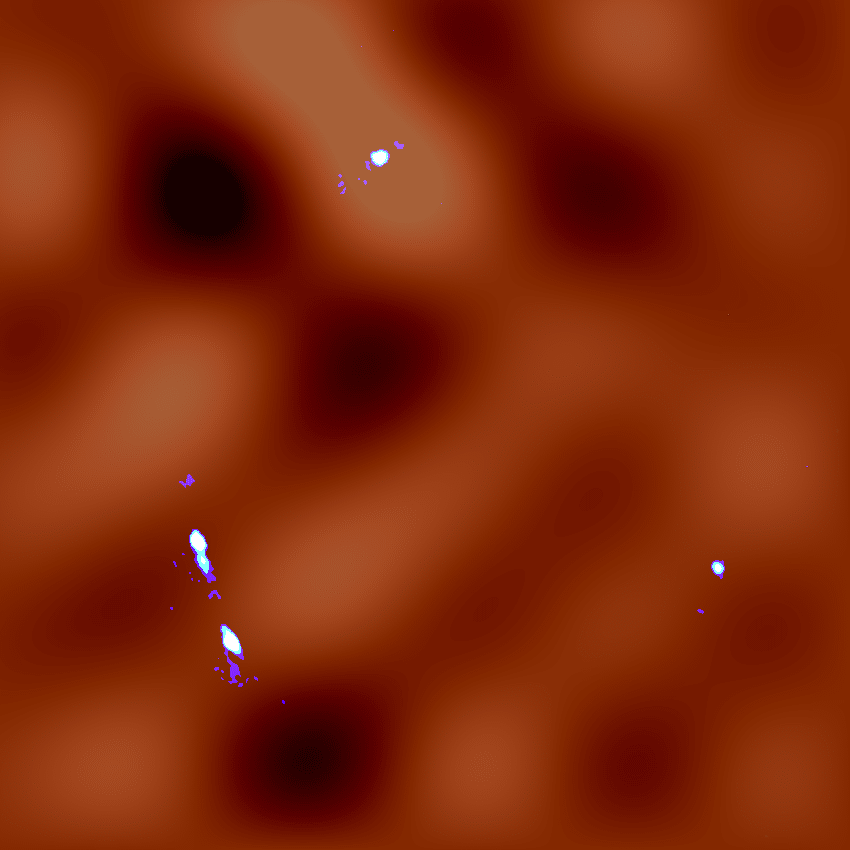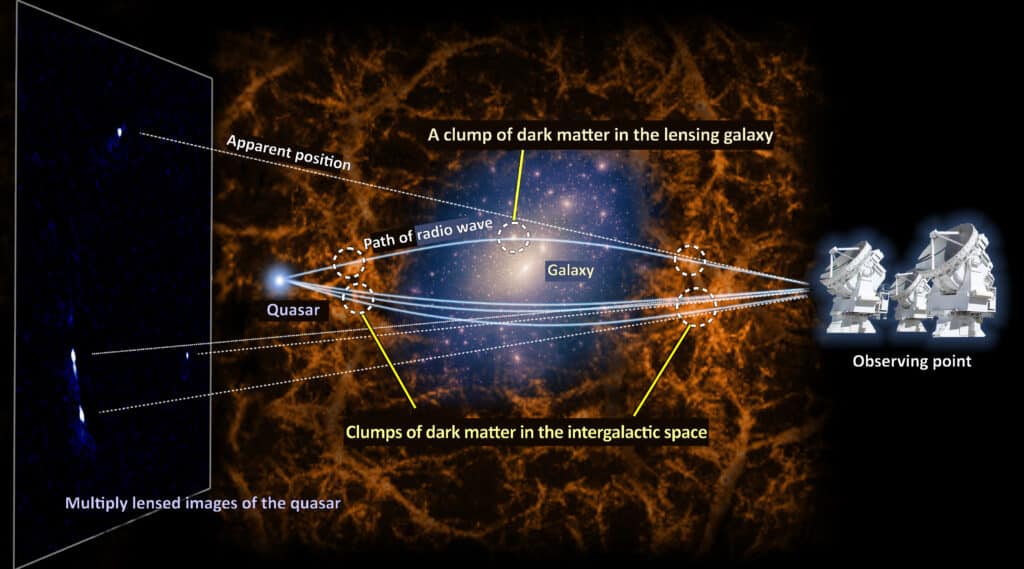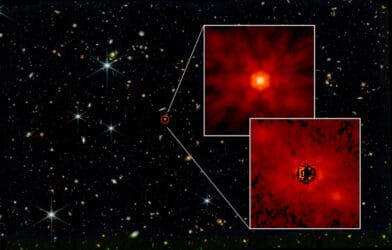Researchers have achieved a spectacular feat in the quest to understand one of the universe’s greatest mysteries: dark matter. Using an innovative approach, a team led by Professor Kaiki Taro Inoue at Kindai University reveals “the distribution of dark matter in never before seen detail, down to a scale of 30,000 light-years.”
Dark matter is an elusive and mysterious form of matter that doesn’t interact with light. Normally, we can’t see or detect dark matter directly. However, its gravity affects the light that passes near it. Think of this like looking at a distant object through wavy water. The light gets bent and distorted. By studying these distortions in great detail, scientists hope to gain insights into what kind of matter—visible or dark—is causing the effect.
Though we can’t see it or isolate it in a lab, one recent study estimates that 80% of the universe’s matter composition is dark matter.
How did the researchers study dark matter?
The team used what’s known as a gravitational lens to make their observations. A gravitational lens occurs when two objects in space align in such a way that the one closer to us distorts the light coming from the one further away. This effect can give scientists a sort of “natural telescope” to study objects that would otherwise be difficult to see in detail.

Using the Atacama Large Millimeter/submillimeter Array (ALMA), one of the world’s most advanced telescopes, researchers scrutinized the light coming from a distant quasar, a supermassive black hole that emits vast amounts of energy.
The quasar, named MG J0414+0534, is so far away that its light has taken billions of years to reach Earth. Scientists took advantage of this long journey to study how the light was distorted by the gravitational pull of objects—potentially including dark matter—that it passed by on its way here.
The team employed high-resolution images of the quasar and used advanced mathematical models to analyze the distortions. They managed to measure the degree of light-bending with impressive accuracy. The distortions they found were consistent with what would be expected if dark matter was present along the path of the light.
Interestingly, the researchers also detected hints of a smaller, dusty galaxy near the quasar. Although this finding needs further confirmation, it adds another layer to the complex interplay of celestial bodies and dark matter in our universe.
Significant steps forward
Until now, it has been challenging to get a clear picture of how dark matter is distributed, especially when the clumps of dark matter are smaller than galaxies. This research is crucial because the “observed distribution fluctuations provide better constraints on the nature of dark matter.”
Their findings are also consistent with theories that suggest dark matter is composed of slow-moving, or “cold,” particles. This could be a significant step toward confirming or revising our current understanding of what dark matter is made of.

The team isn’t stopping here; they’re already planning to make further observations to constrain the nature of dark matter even more. As the scientific community continues to piece together the cosmic puzzle, this study marks a significant advancement in our understanding of the universe’s most elusive substance.
With each discovery like this, we move a step closer to solving the mysteries that have puzzled humanity for generations. And in doing so, we gain a better understanding of our place in the grand tapestry of the universe.
The full research paper is published in The Astrophysical Journal.













Comments